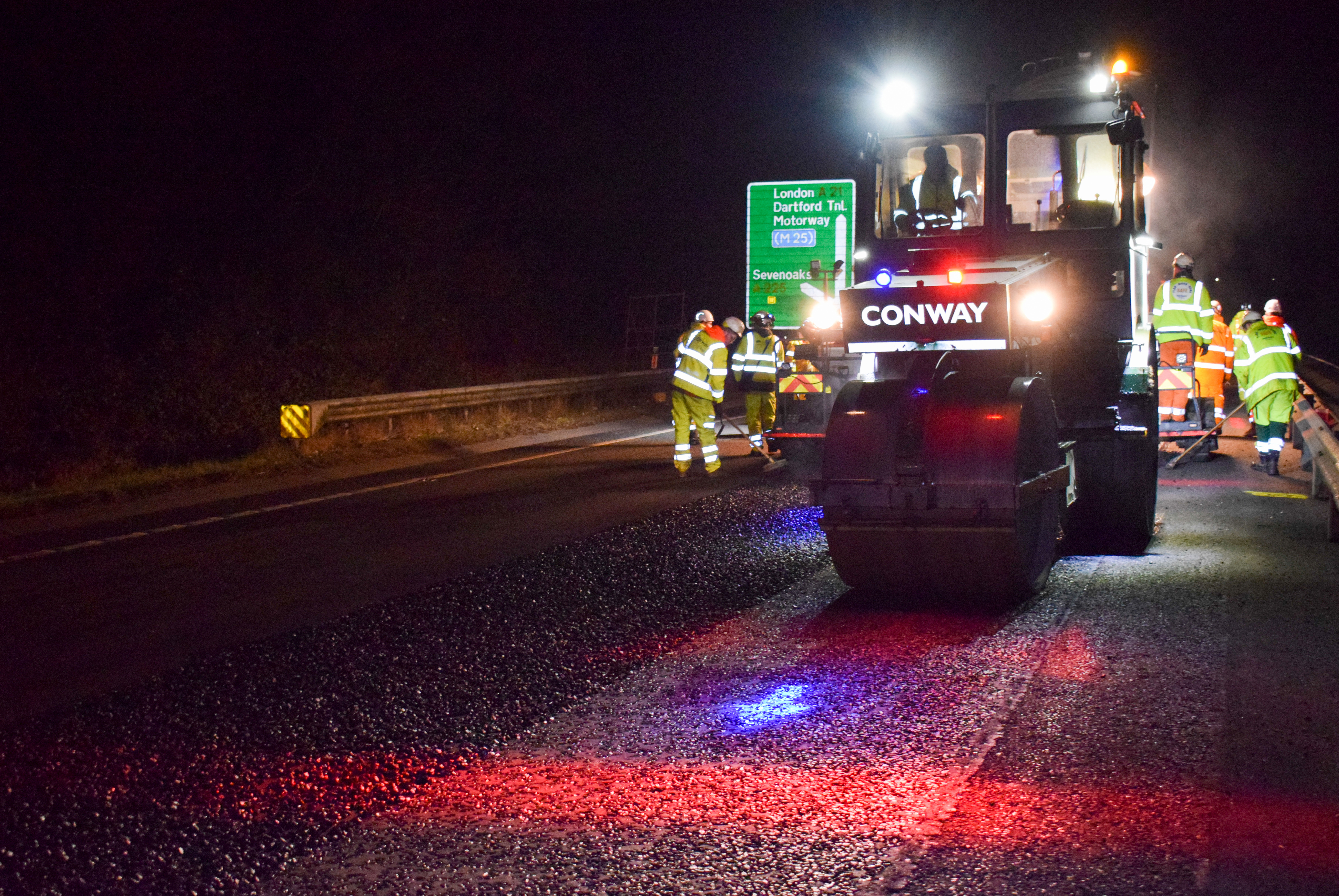Challenges and Solutions
Careful planning and collaboration meant the A21 contract was the first work to be undertaken by any of the contractors on the new framework in the Southeast.
“One of the benefits of being the principal contractor is our early involvement, which enabled us to have more control of the programme, so we could plan in the phases from the very start and capture any efficiencies,” says FM Conway framework manager Andy Weymouth.
The business also managed to shave time off the programme, cutting the number of shifts from 25 to just 20. This was partly due to efficiencies, and also because FM Conway advised National Highways that not all the anticipated crack repairs were required.
Outcomes
The scheme was delivered in two phases – the southbound carriageway first and then the northbound. Work started at 8pm each evening, and the carriageway had to be handed back, complete with road markings, by 6am the next morning.
“The collaboration between National Highways, ourselves and the other SDF contractors was key to delivering this scheme,” says Andy. “This was the first scheme under the new framework for everyone, and we had good buy-in from the start from an efficiency point of view and in terms of the quality we were trying to achieve.”

